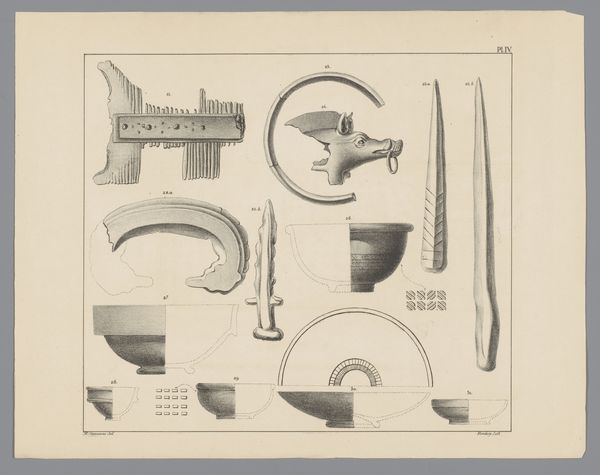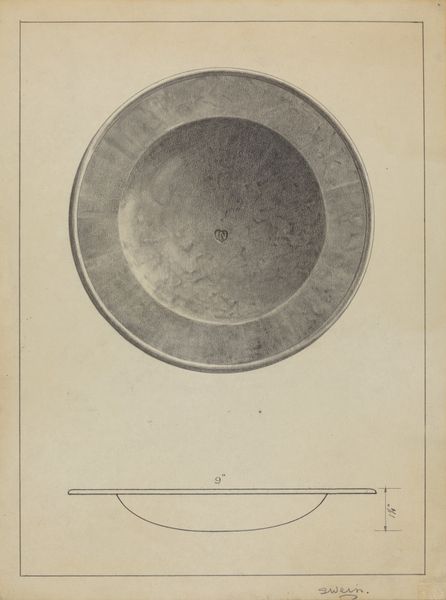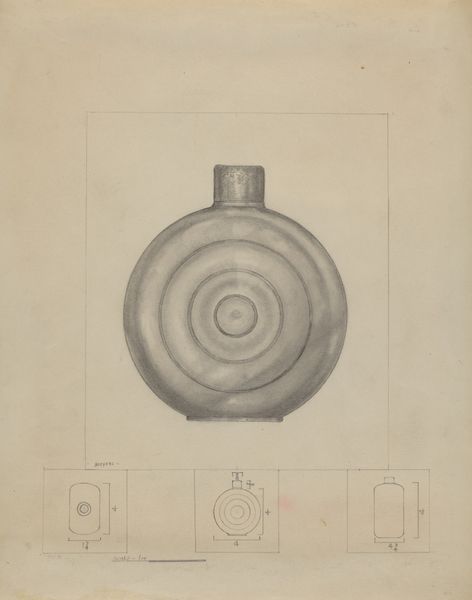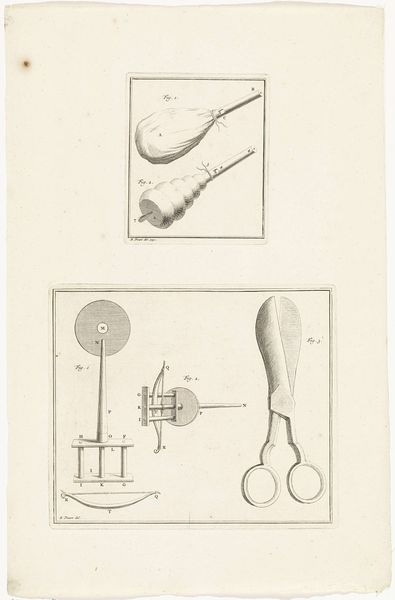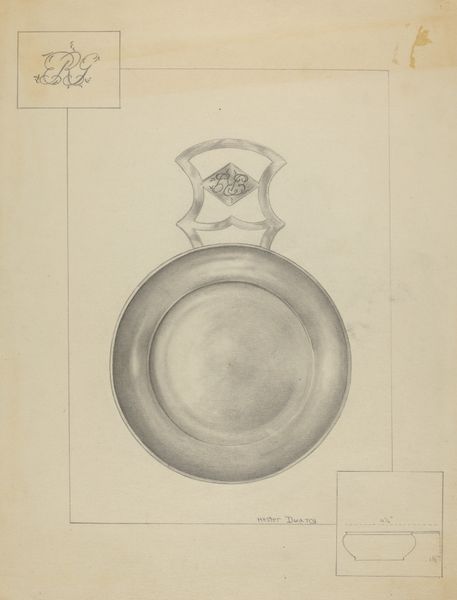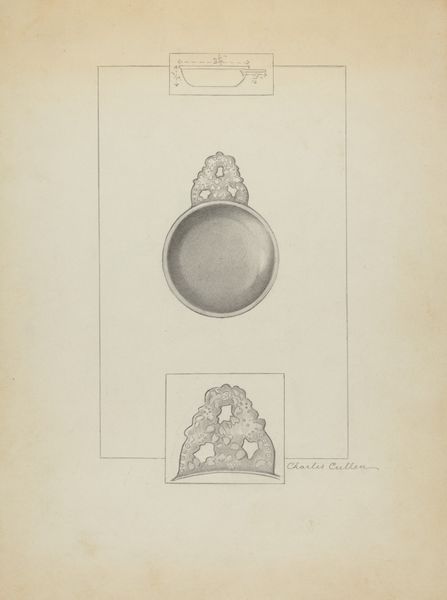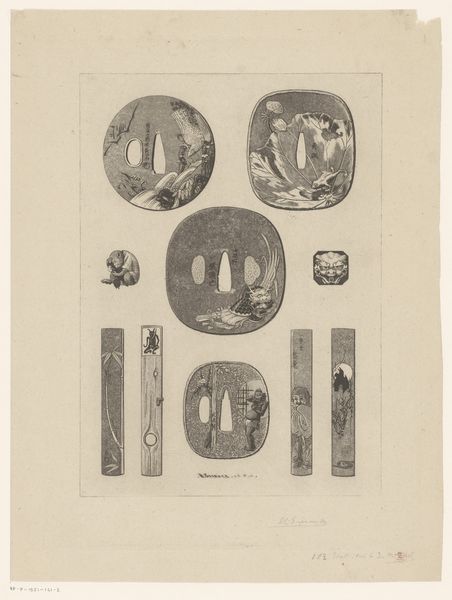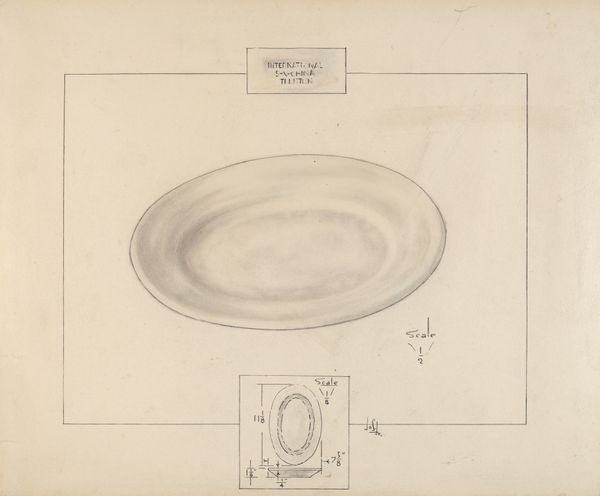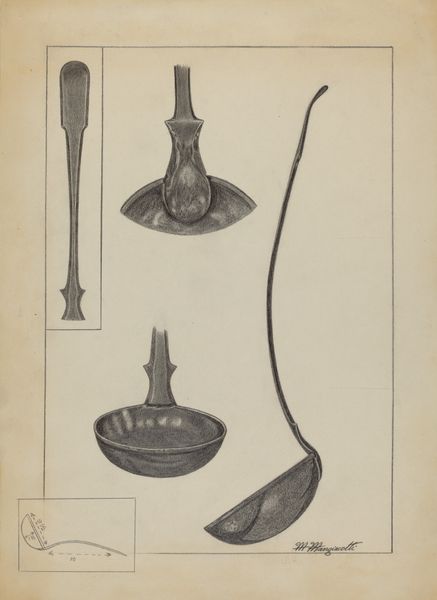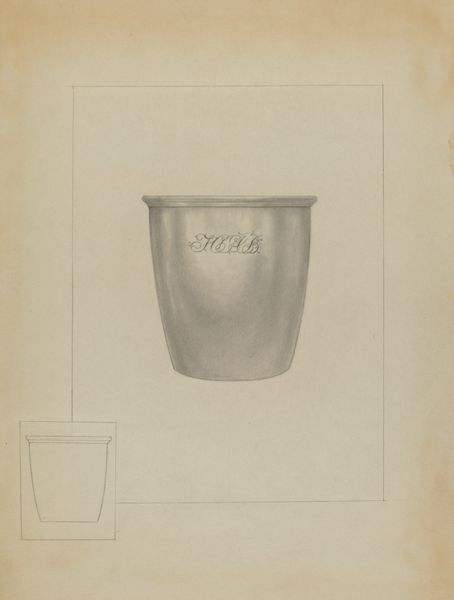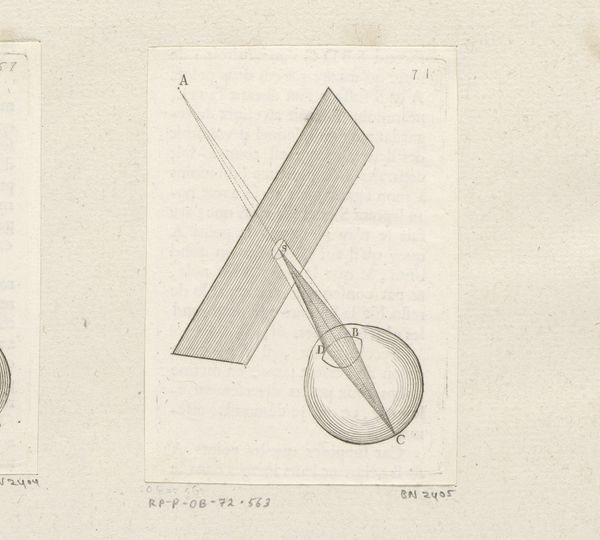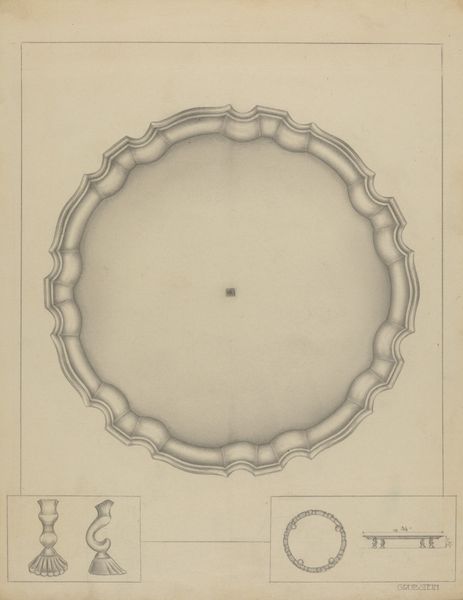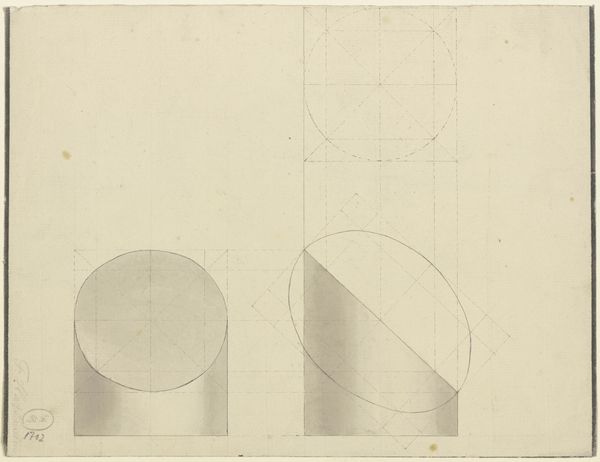
drawing, print, etching, paper
#
drawing
# print
#
etching
#
figuration
#
paper
#
ancient-mediterranean
#
history-painting
Dimensions: height 225 mm, width 285 mm
Copyright: Rijks Museum: Open Domain
Curator: Let’s turn our attention to "Romeinse opgravingen waaronder kruiken," or Roman Excavations Including Pitchers, an etching and print made on paper in 1843 by Tiemen Hooiberg. What’s your initial take on it? Editor: It has an analytical mood; a clinical kind of display with its rows of pottery, laid bare as if for forensic study, rendered in stark greyscale. It is as if these vessels, lifted from earth, have been partially reburied into the matrix of the image itself. Curator: Indeed, Hooiberg's approach highlights the contemporary obsession with cataloging and classifying the past, a scientific sensibility influencing art. He emphasizes the act of discovery and the careful documentation of these finds. These are remnants, unearthed relics given prominence in an age deeply fascinated by its classical origins. Editor: The way they're presented—half shaded, half in outline—emphasizes their fragmented nature and, perhaps, the speculative labor of archaeologists at that time to reconstruct history from shards. How different this image is from what we would produce now: with photos instead of line art! The act of sketching the pottery by hand grants the relic more aura. Curator: Precisely. Consider also the sociopolitical climate: a burgeoning national identity fueled by romantic visions of the past, especially Rome. Works like these, made available as prints, contributed to a broader visual culture shaping collective memory. What looks academic is intrinsically tied to these identity-building impulses. Editor: It makes me consider the role of craftsmanship here, not of the Romans who first shaped this clay, but Hooiberg’s etching: the labour and skill involved in producing each precise line and careful gradation that lends such clarity to each object. This is the early labour of documentation itself, before photos became common. Curator: Well observed. It underscores a fascinating collision between artistry, archaeological study, and emergent nationalisms. Each carefully rendered vessel signifies more than its material form; it carries historical and cultural weight. Editor: This piece does make one wonder about the hands that made them and the hands that found them: what they carried, and what they carried away.
Comments
No comments
Be the first to comment and join the conversation on the ultimate creative platform.
